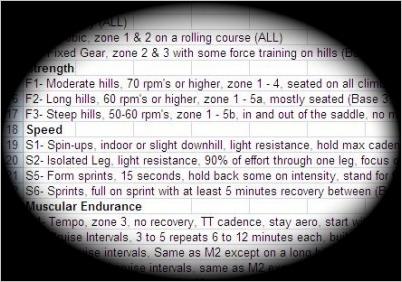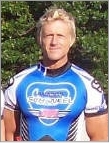This week's tip:
Create Your Training Plan
Step 2: Figuring out what to do
By Alex Fedak

To-do list
Setting your goals is great (Step 1). But don’t stop there.
The next step in the process is figuring out what you need to do to reach them.
How do you do that?
By doing your homework. By finding out what has worked for other people and what you think will work for you.
If your goal is to speed up your sprint, read everything you can about sprint training. If your goal is to lose weight, delve into the vast literature on weight loss and dieting. If your goal is to peak for a specific race next season, familiarize yourself with periodization training.
Whatever your goals, discover the methods that have worked for and are recommended by successful athletes, coaches and other experts.
Resources
You will find lots of helpful information online. For skate-related goals, read the Skate Tips and Ask Bill Begg! columns on the Inline Planet. For other stuff, search Google or visit your local library or bookstore.
A book that has helped me is The Lance Armstrong Performance Program: Seven Weeks to the Perfect Ride. It was written for cyclists but works well for inline skaters due to the parallels between our sports.
Included in the book are detailed training schedules with recommended workout durations and target heart-rates, advice on weight training, nutrition and rest, and suggestions for developing the mental toughness needed to stick to your training plan.
Tools for weight loss
If your goal is to lose weight, plug yourself into one of the many excellent weight-loss calculators on the web.
Health Status has a long list of calculators that help figure out how many calories you currently burn and consume and how much you burn exercising.
Livestrong has a nice online journal (registration required) that helps you set weight-loss goals and charts your progress.
Write it down
Make a list of what you are going to do to achieve your goals. And be as specific as possible.
If your goal is to improve your conditioning, don’t just say you are going to go skating. List how many times a week and for how long.
If your goals is to improve your sprint, list the specific things you are going to do, for instance: 500-meter interval training twice a week, technique training two times a week, and weight training once a week.
Make a list that feels right to you. But don’t be obsessed with getting everything right.
Inevitably, training plans are works in progress, subject to revision. As you work through them, keep the things that work, drop the rest, and keep your eyes open for new ideas.
---
Step 3: Create your training schedule
...
 Alex Fedak is one of America’s top pro skaters. In recent years, he has notched top five finishes in Saint Paul, Ottawa, Houston, San Diego and Round Rock. He is also a Category 3 road cyclist and an accountant for Oklahoma City. “I have been skating since I was very young, starting on quads and then transitioned to inlines in the early 90’s,” he says. “My first inline race was in 2003 at a local Oklahoma City event. Then I branched out to Texas. Since then, I have averaged five to seven inline races a year.” A member of Simmons Racing, he trains with hometown buddy and teammate Rob Bell.
Alex Fedak is one of America’s top pro skaters. In recent years, he has notched top five finishes in Saint Paul, Ottawa, Houston, San Diego and Round Rock. He is also a Category 3 road cyclist and an accountant for Oklahoma City. “I have been skating since I was very young, starting on quads and then transitioned to inlines in the early 90’s,” he says. “My first inline race was in 2003 at a local Oklahoma City event. Then I branched out to Texas. Since then, I have averaged five to seven inline races a year.” A member of Simmons Racing, he trains with hometown buddy and teammate Rob Bell.